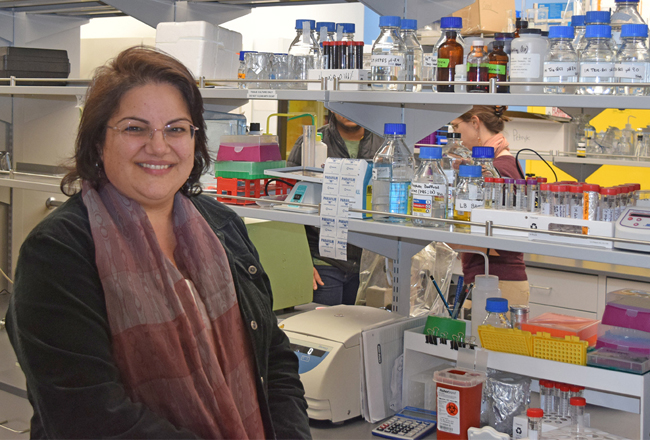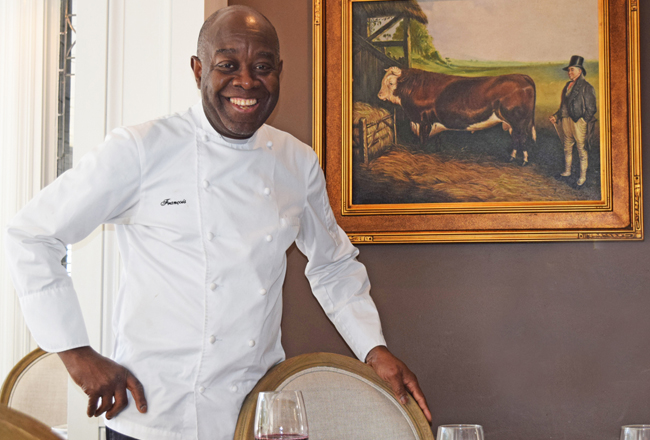When Ruba Deeb arrived at the University of Bridgeport in 2015 from New York”™s Weill Cornell Medicine, she realized there was something different about her new surroundings.
“At Cornell, they were converting the labs into a collaborative environment so they could maximize the use of resources,” she said. “So, you would have on one floor the department of pharmacology with psychology and biochemistry, and everyone would be sharing ideas and equipment. And grants would be together in the name of Team Science.”

While Deeb”™s new role as the director of biomedical research development included having her own laboratory, she thought it would make sense if the university replicated the Cornell example. “So, I said, instead of giving me a small room, why don”™t we take a bigger space and let”™s bring in scientists who have the capacity to do research but don”™t have the space or the resources? And I also suggested that we make it an interdisciplinary kind of an environment so all of us have what it takes to conduct research.”
The university surveyed Deeb”™s colleagues, who supported the idea. Last October, construction was completed on the Collaborative Biomedical Research Center (CBRC), a three-room, 4,000-square-foot facility in the university”™s Charles A. Dana Hall of Science that offers the equipment and tools for research conducted by the departments of undergraduate health sciences, biology, chemistry, physics, biomedical engineering and technology management.
Approximately 70 percent of research at the Collaborative Biomedical Research Center is focused at the cellular and molecular level, with materials science studies accounting for the remaining 30 percent.
Faculty, undergraduates and graduate students have 24-hour access to the center, but Deeb noted that a buddy-system policy has been instituted to ensure lone researchers do not get injured when handling volatile chemicals. Each CRBC room has an industrial shower for researchers to use in the event of an accidental spill.
Describing ongoing research, “We have a biologist targeting the bacterial infections carried by parasites that are very common in the tropical areas of the world,” Deeb said. “In the bioengineering aspect, we are focusing on drug targeting ”” specifically how we can use nanoparticles or antibodies to attach a drug to it and deliver it to a tumor site. I am looking at tapping into repair processes that we are already equipped with, to activate before disease becomes apparent.”
Deeb said the CRBC may soon see two pilot studies to be conducted in collaboration with Yale University, although she declined to describe the research in detail until funding has been secured. “They have physicians who don”™t have the laboratories, but have the specimens,” she said of the Yale studies. “The research would be done here by their medical students and my students. We want to encourage other institutions to collaborate with us.”
Deeb said the university launched the Collaborative Biomedical Research Center on a “modest budget” of $17,000, which was used for research equipment and tools. Faculty researchers are collaborating in pursuit of grant money to further finance their work. Deeb said the availability of individual research grants “has dwindled quite a bit” in recent years.
“There is a heavy push to implement team grants,” she said. “Everybody gets a little bit, enough to keep it going, to publish and to get the knowledge out there really fast. But if you think about it, if three of us team up for a grant, we get one grant that we divide among us. The three of us do not get three grants.”
Since its launch, the CRBC has encouraged greater communication among departments that previously operated in their own silos. Deeb said the school”™s health sciences departments were so impressed with the center that they are constructing a similar set-up to link their various disciplines under one research and development roof.
Before the collaboration initiative, “We were so focused with what we are doing that we never heard another discipline”™s reaction or ideas that could take us in a new direction,” Deeb said. “It is very enriching.”
There is a downside. The CRBC has been so popular that the facility has been overly crowded with users.
“We are thinking of putting a limit on the number of people in there,” Deeb said. “For every 200 square feet, we have one person. We are about 4,000 square feet, and sometimes it is so crowded.”























UB is Bridgeport’s grestest asset… Probaly also true at the regional level…